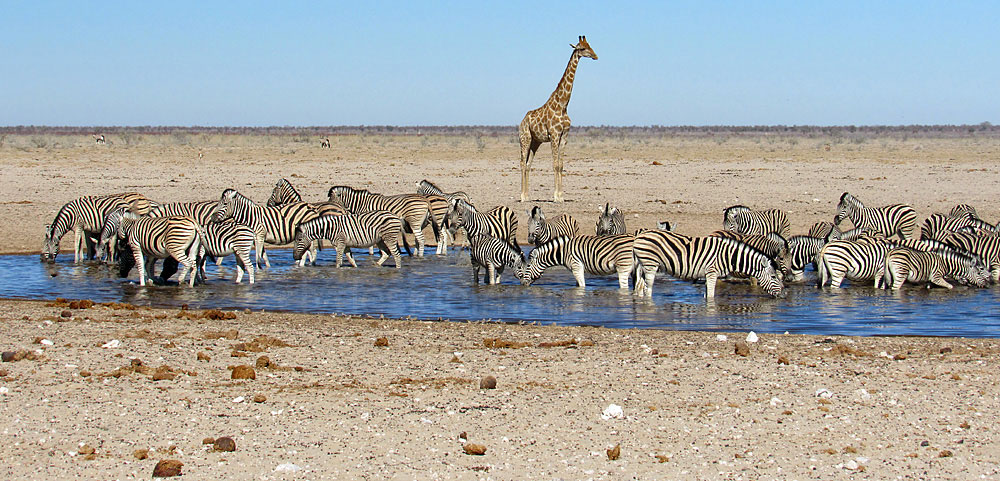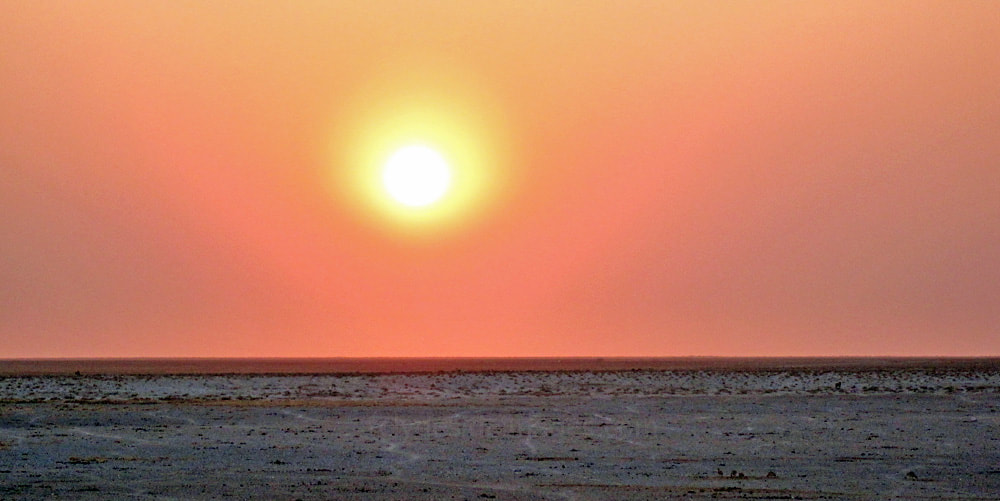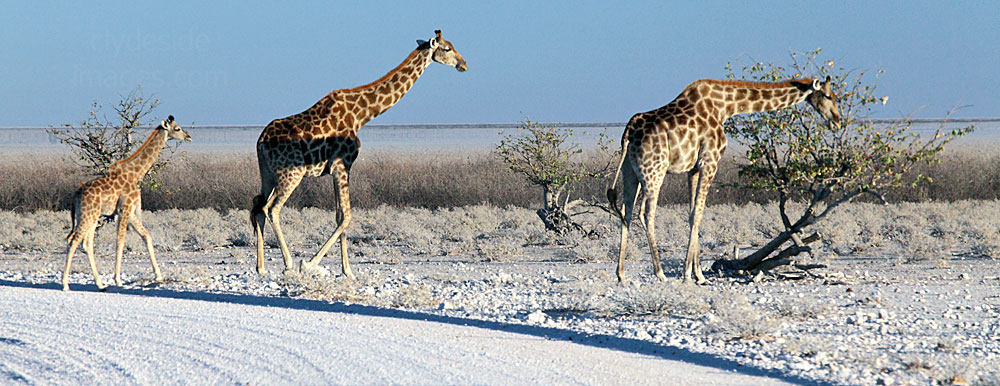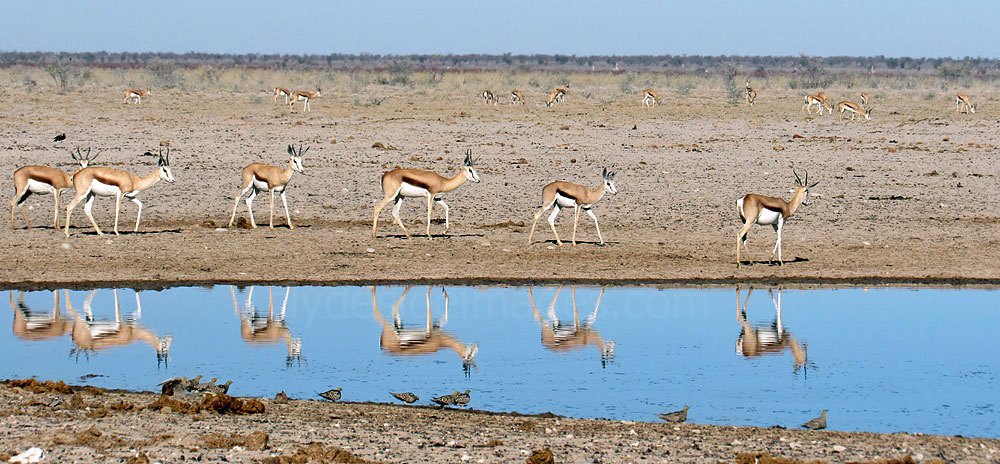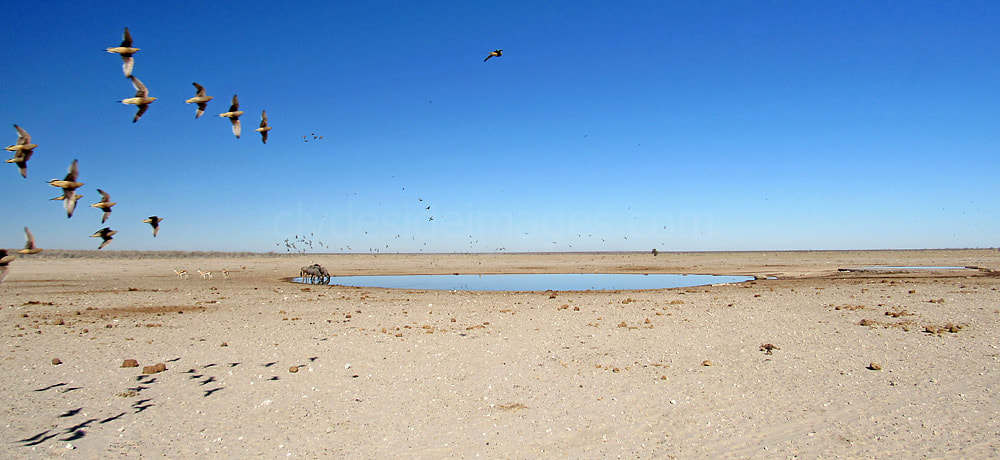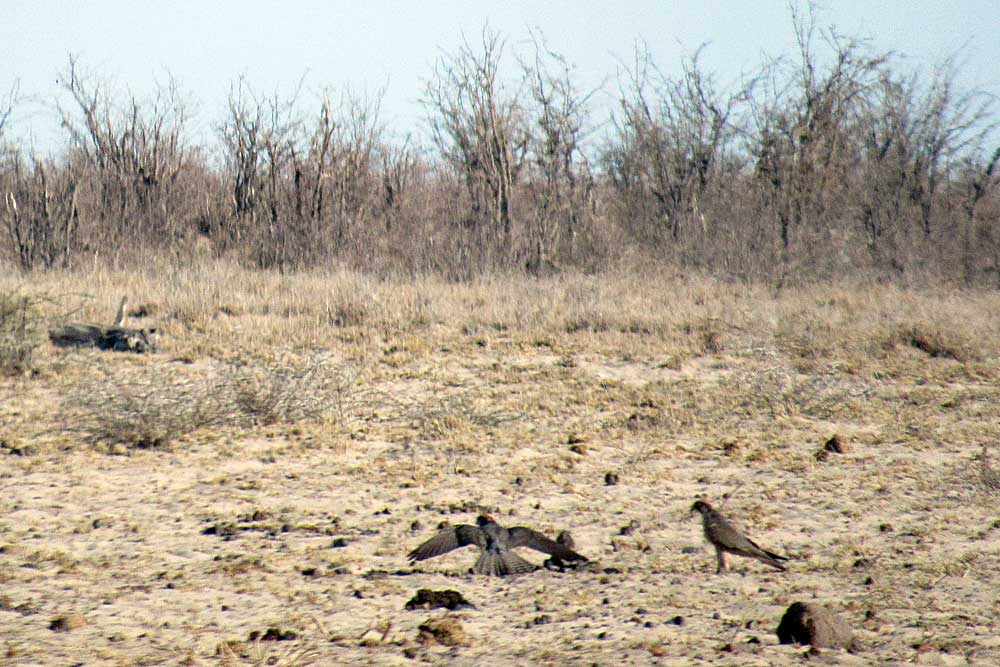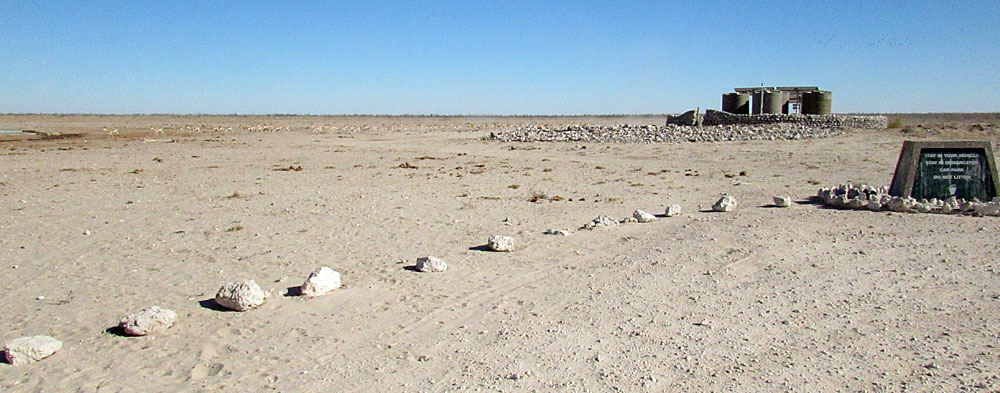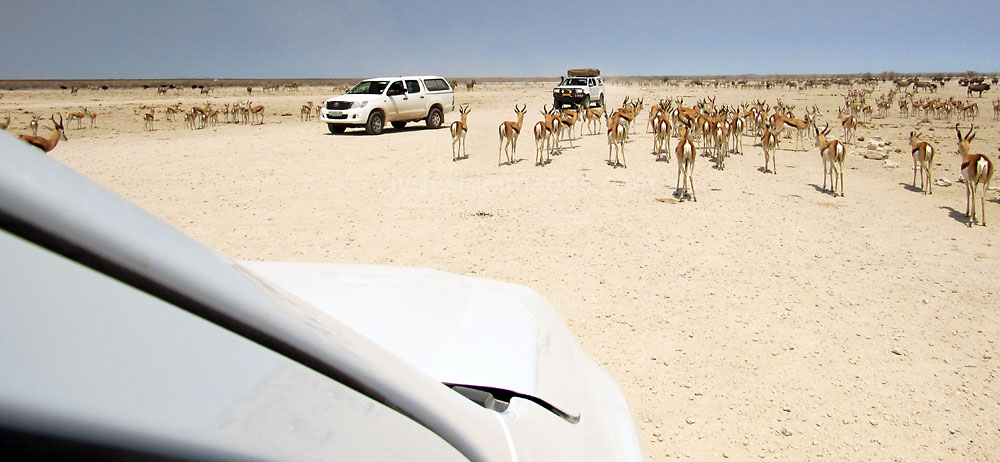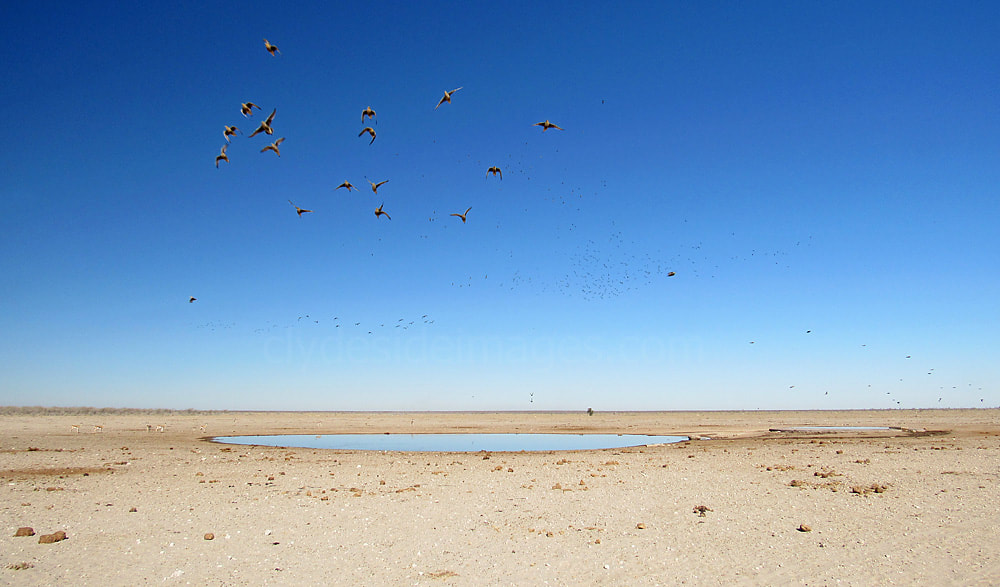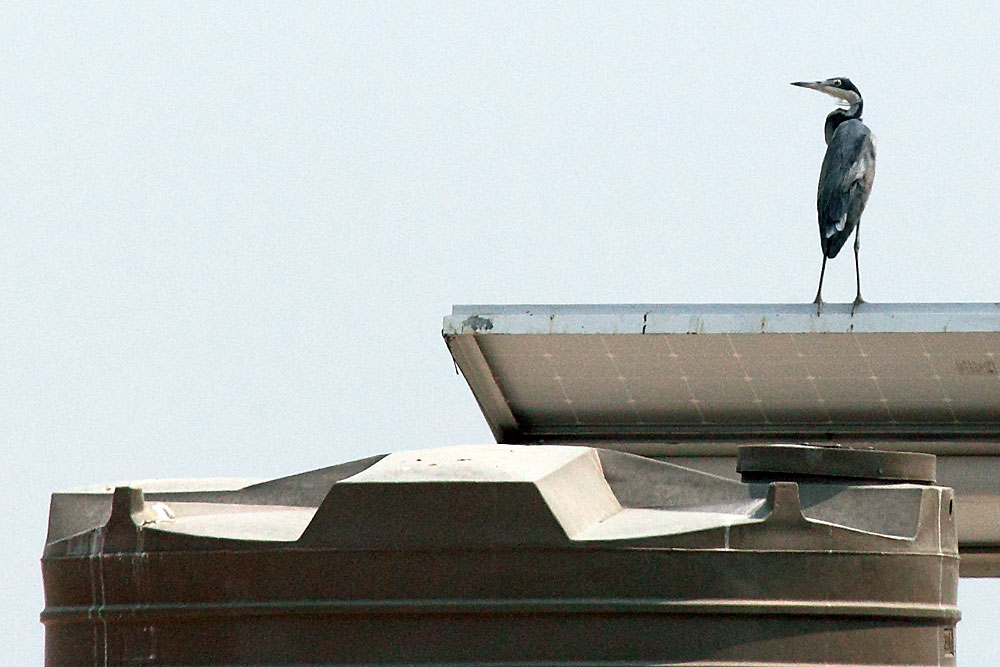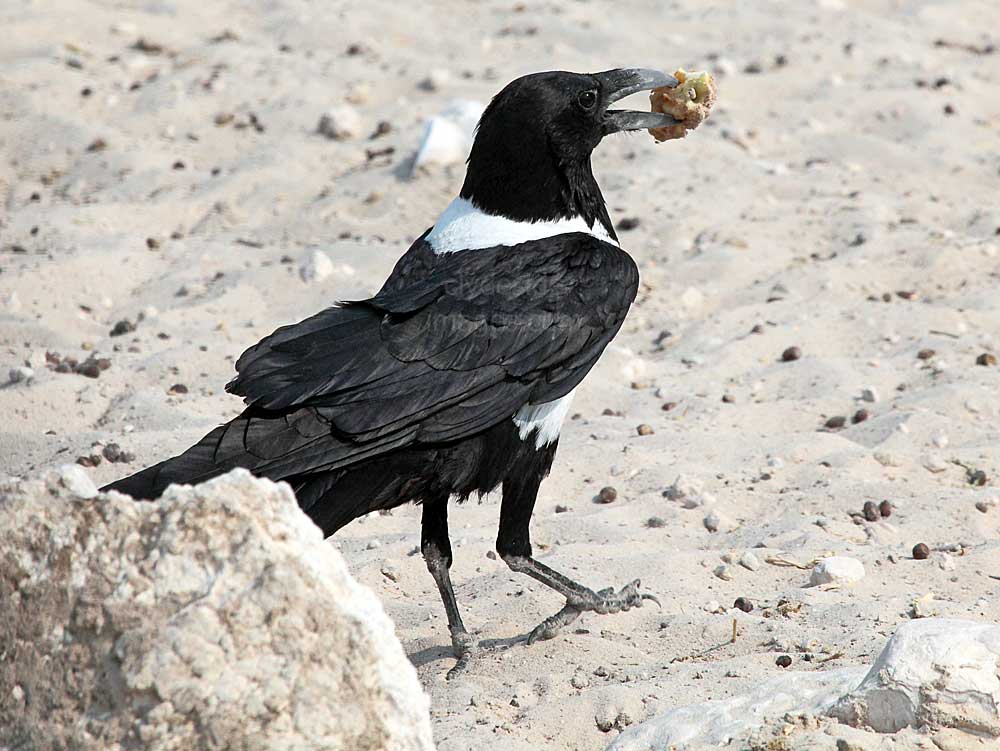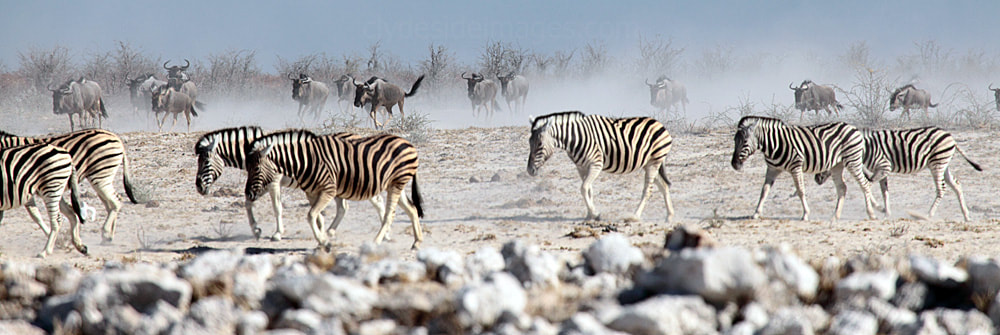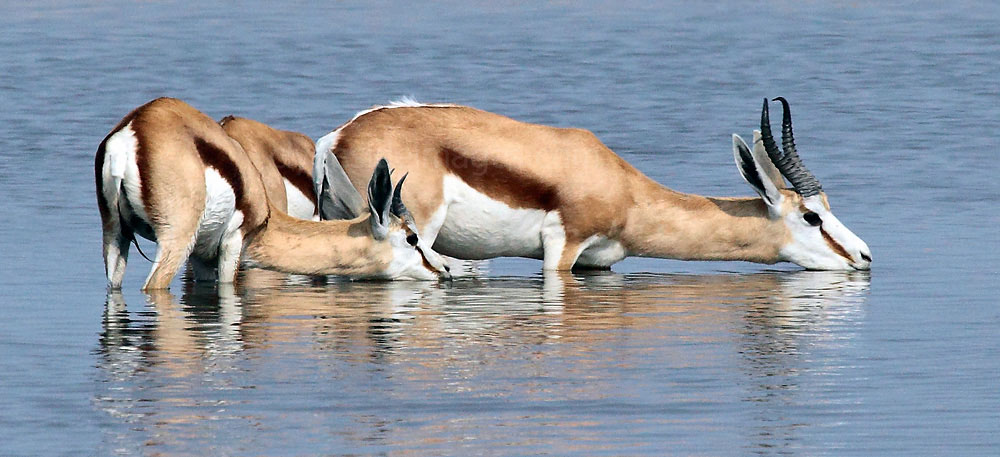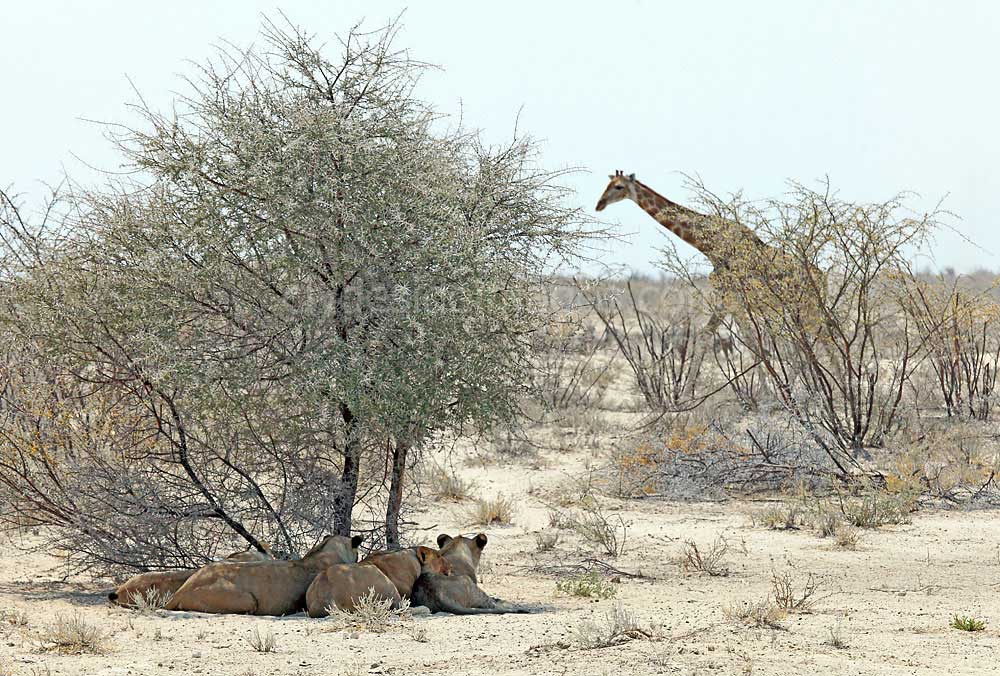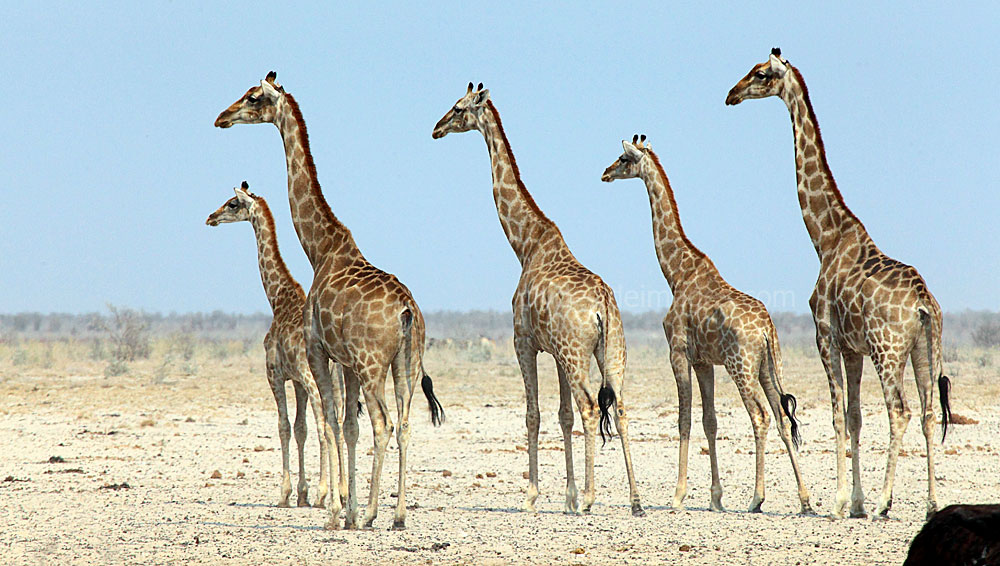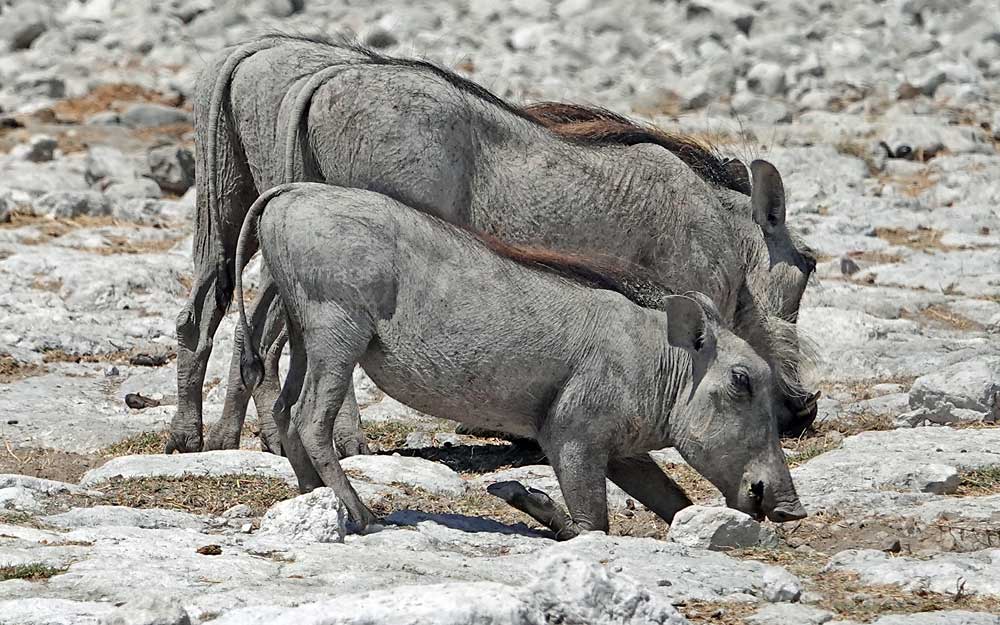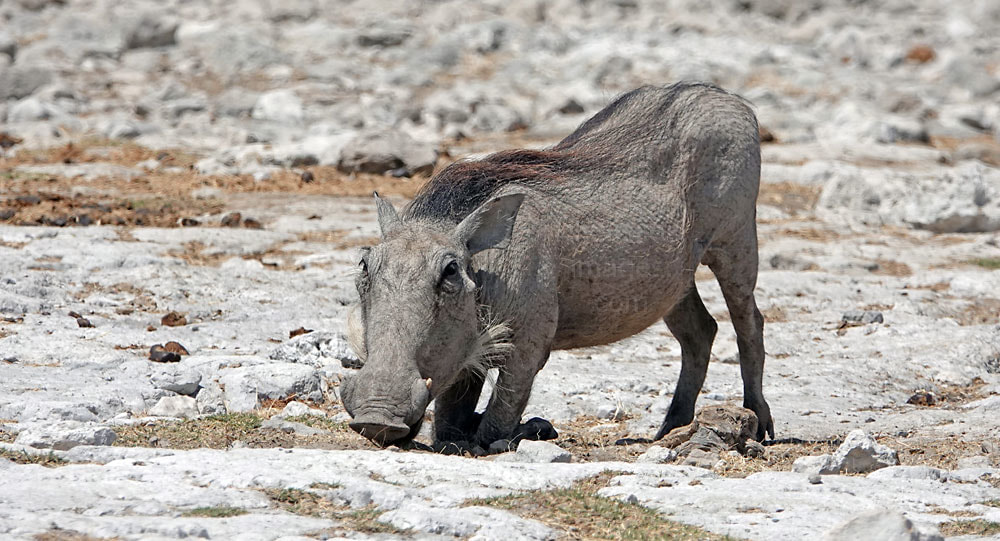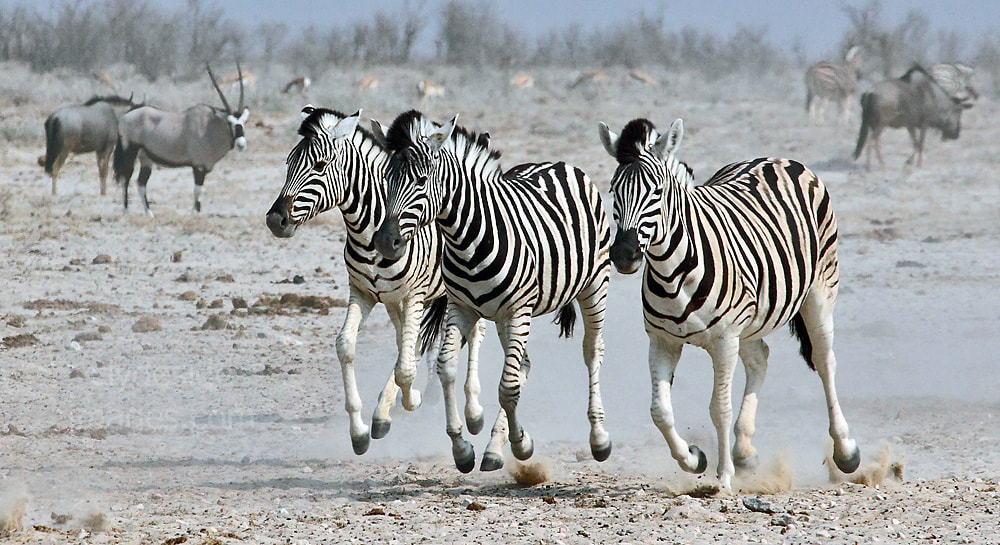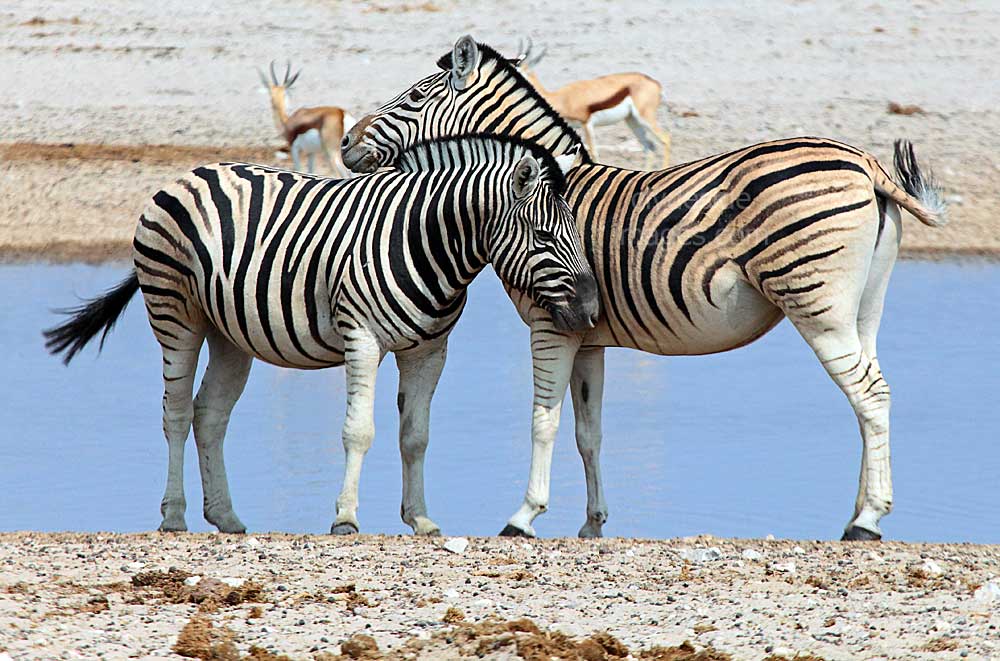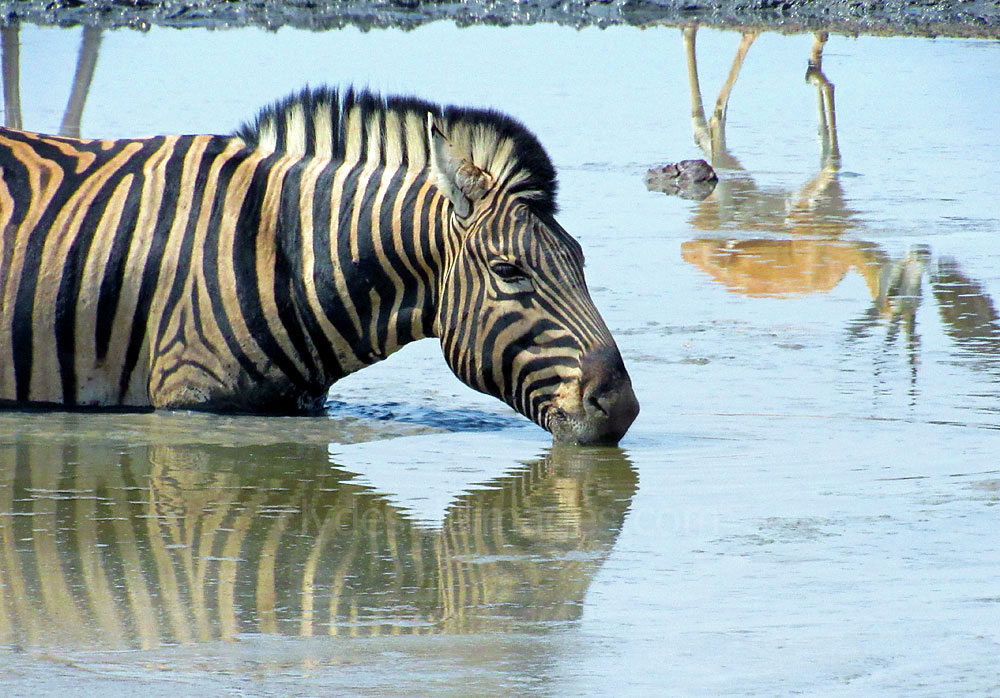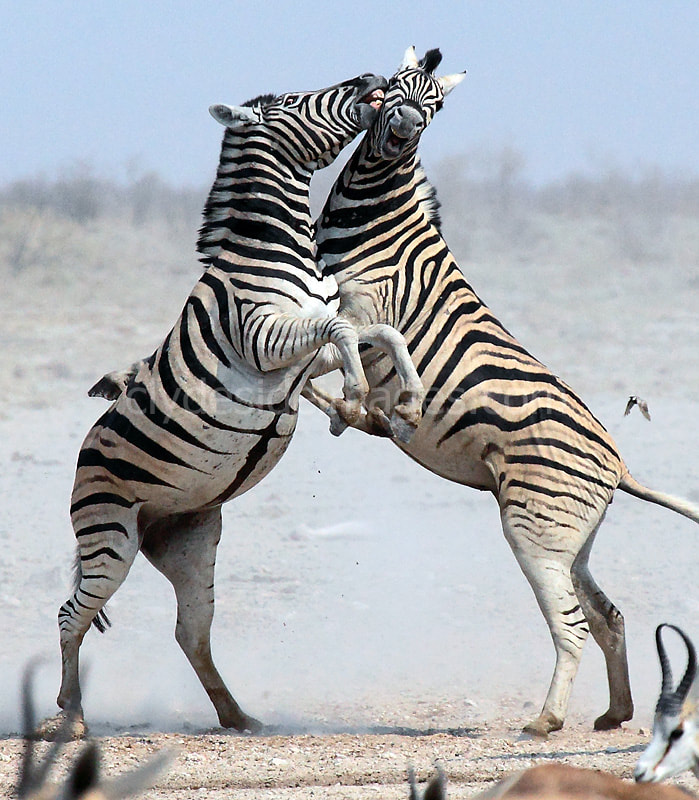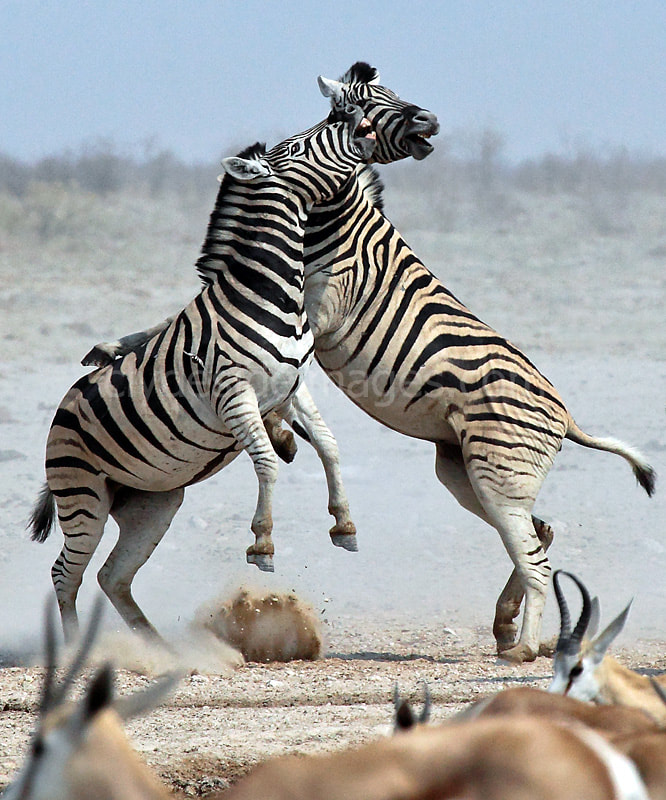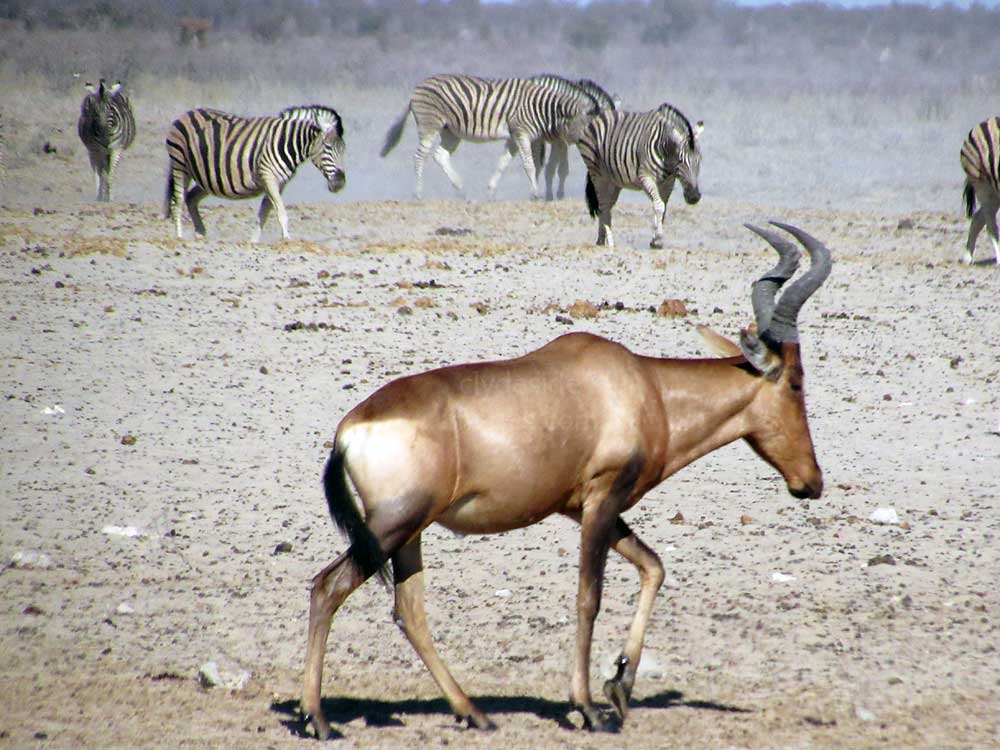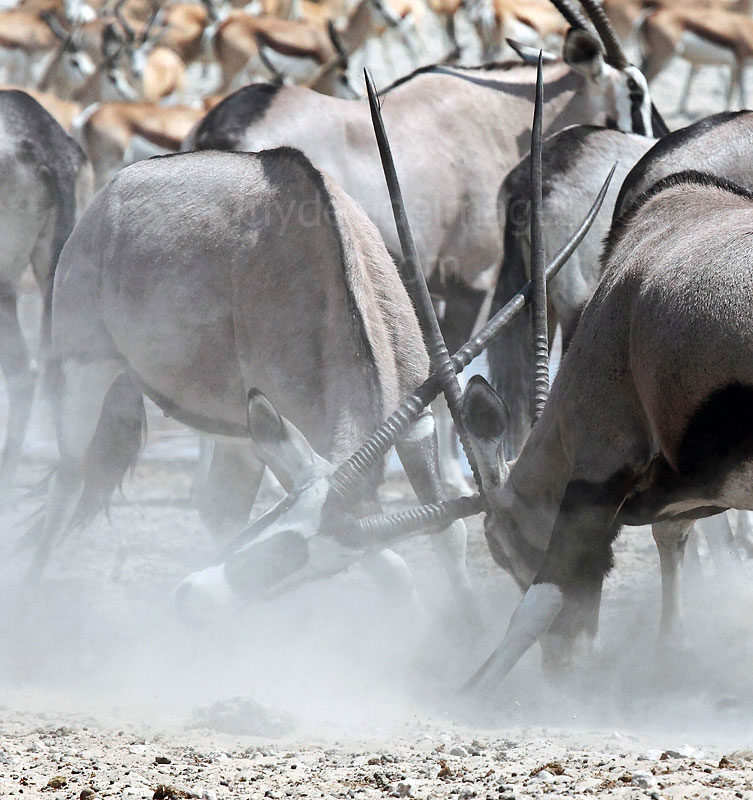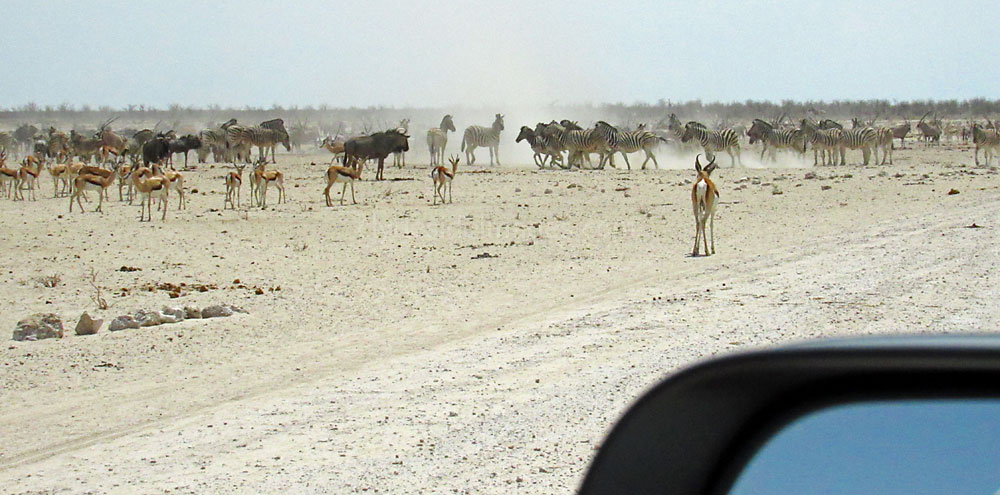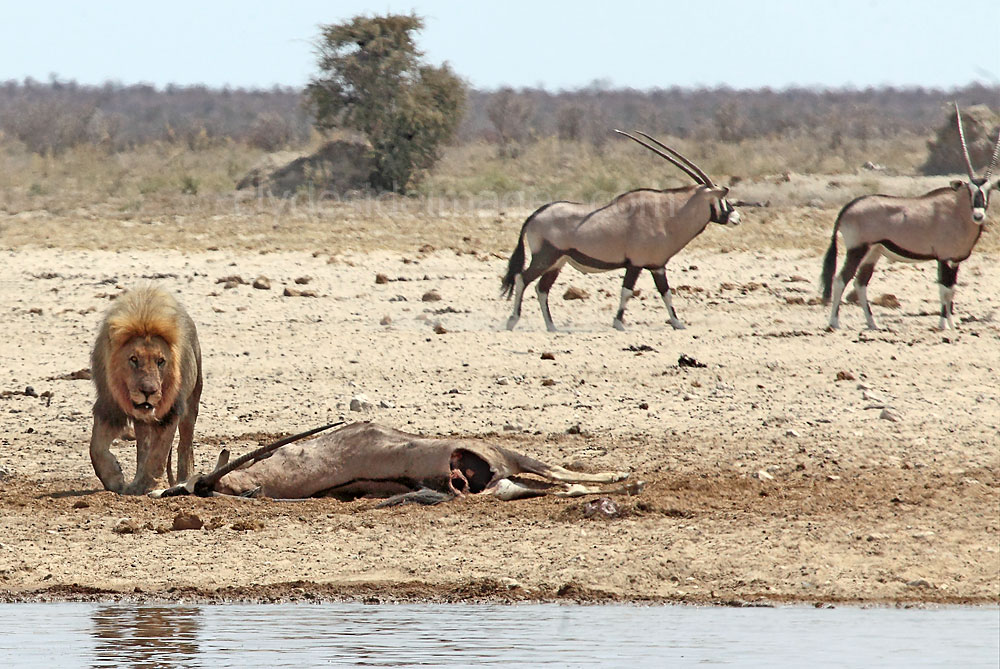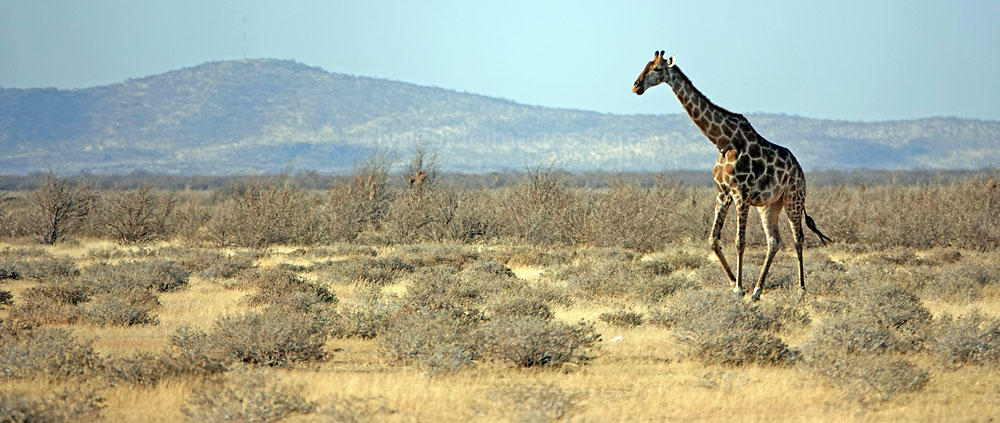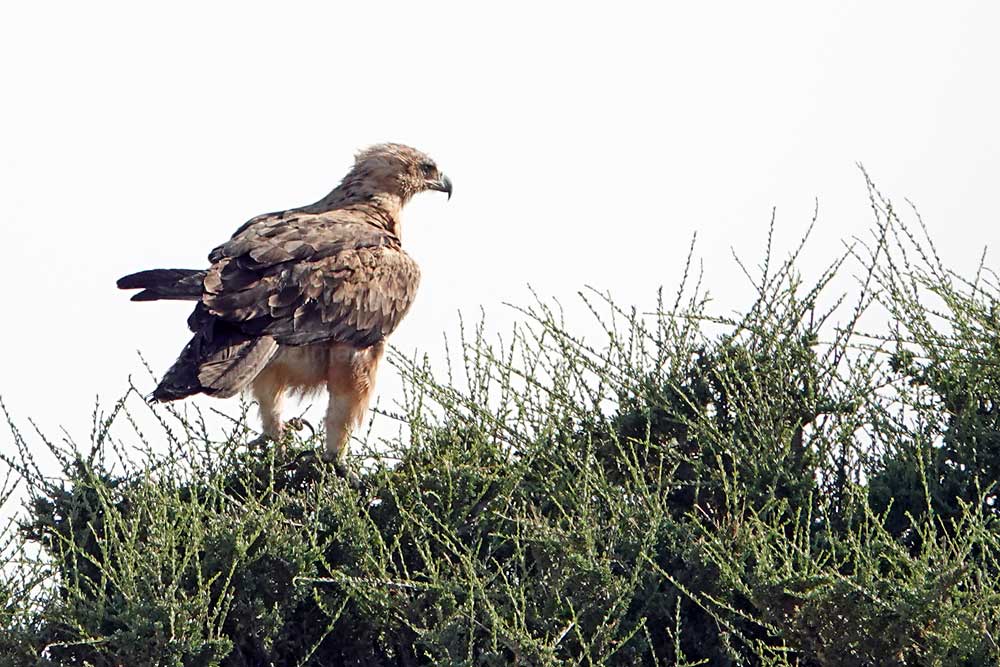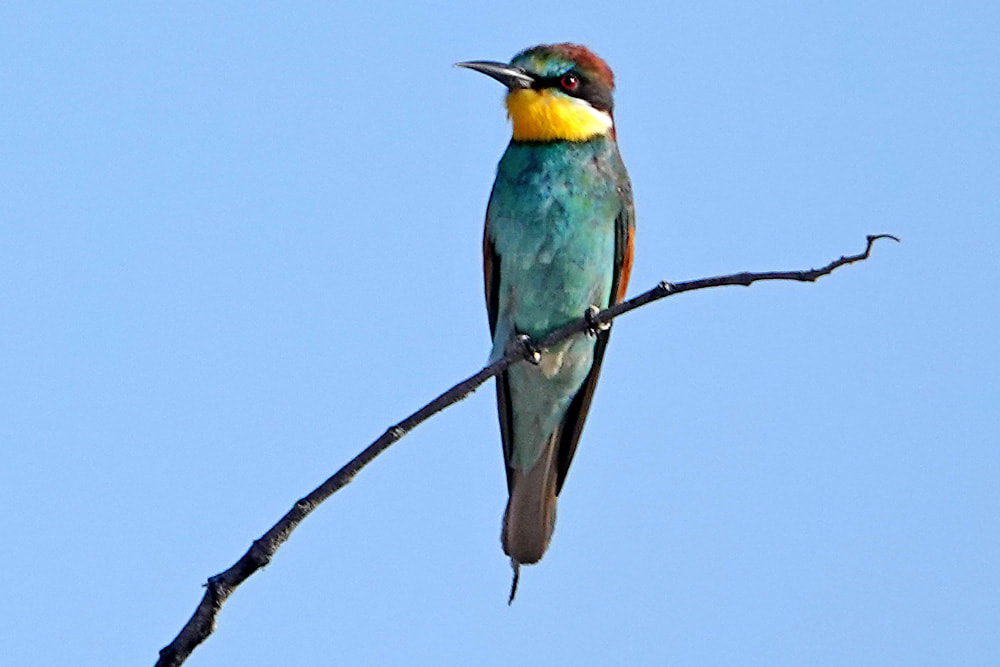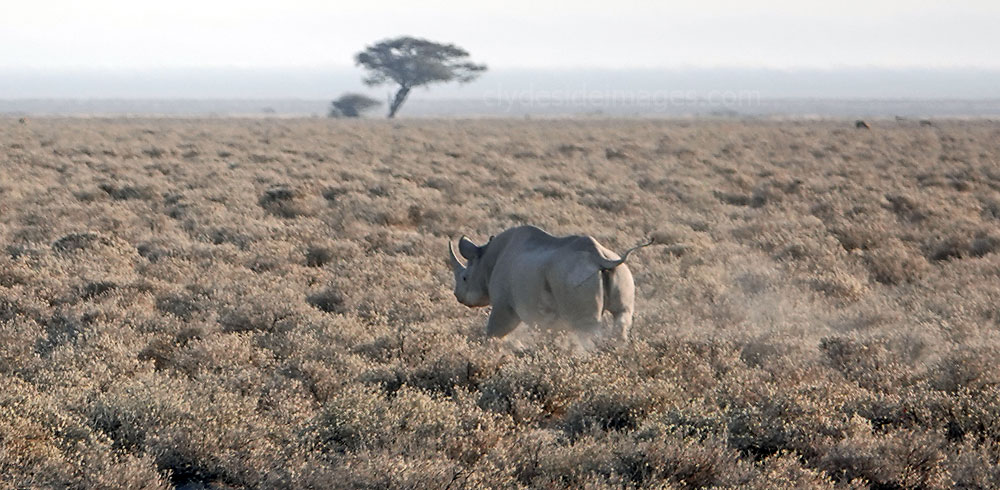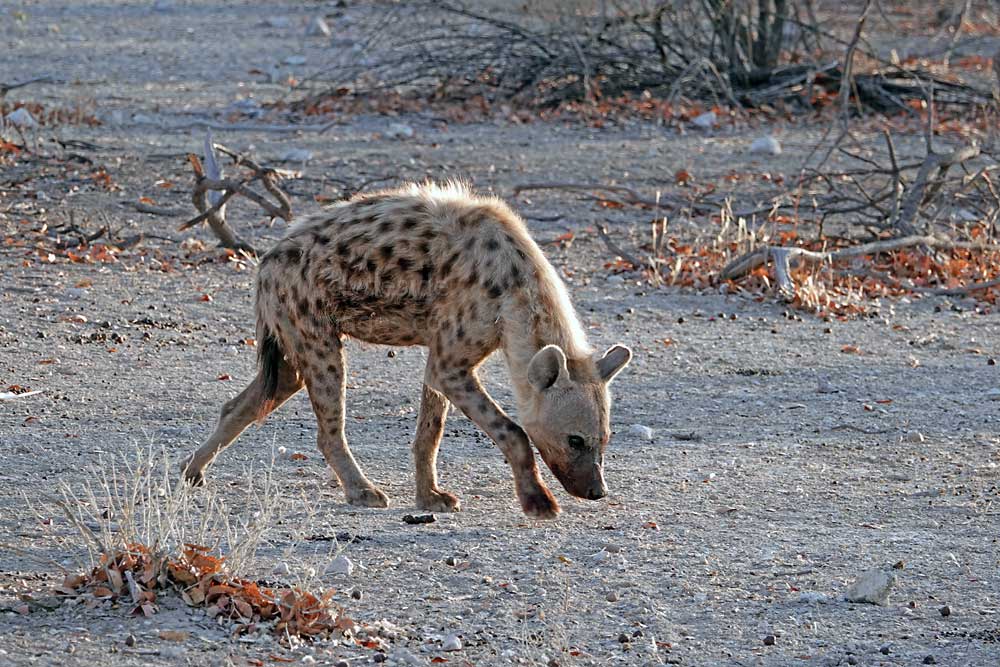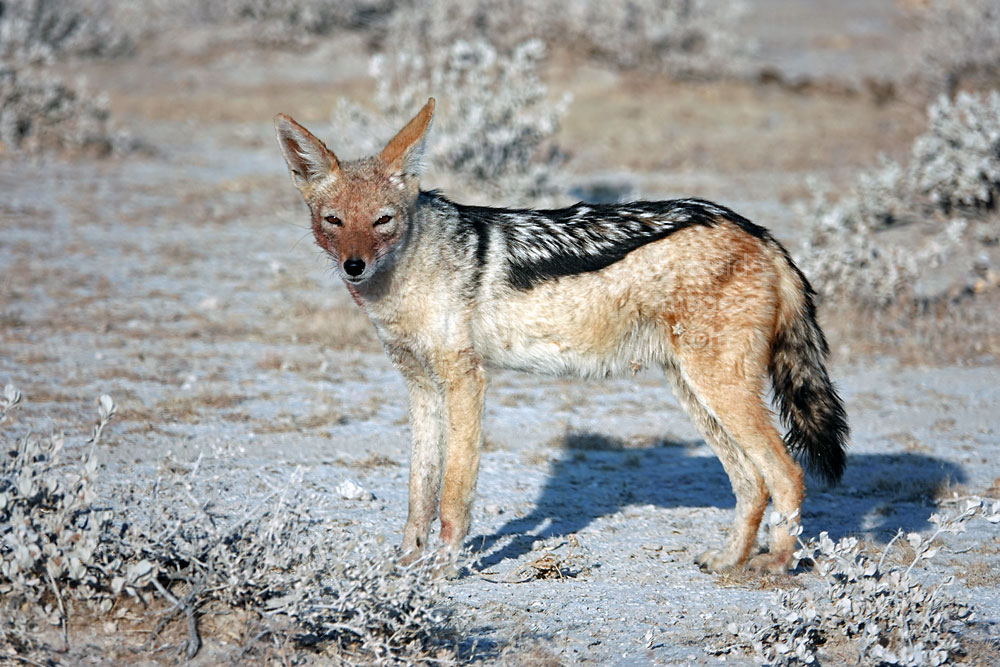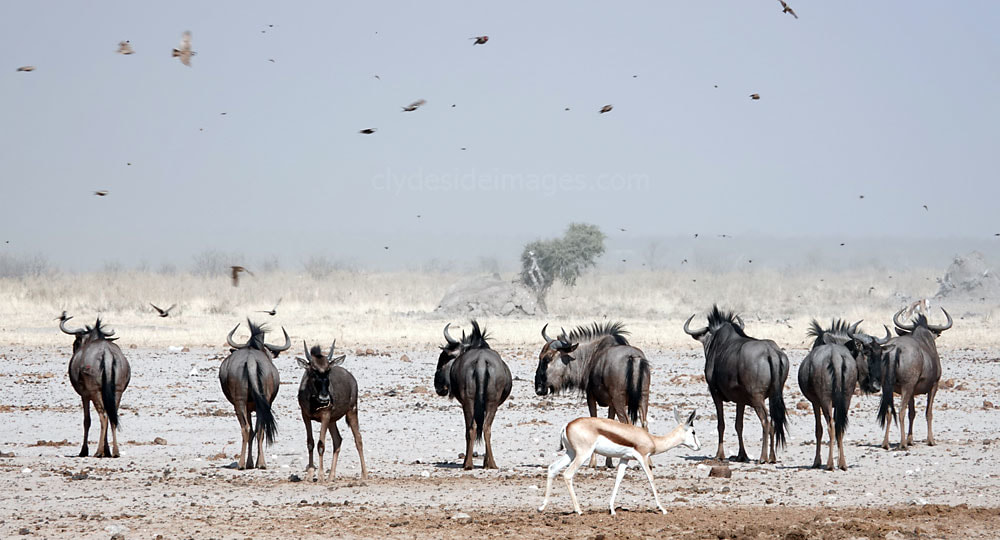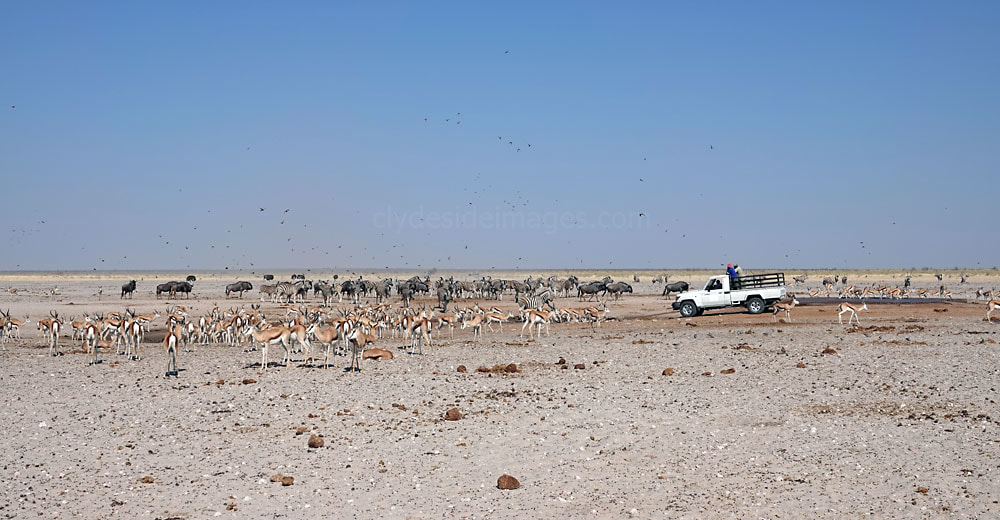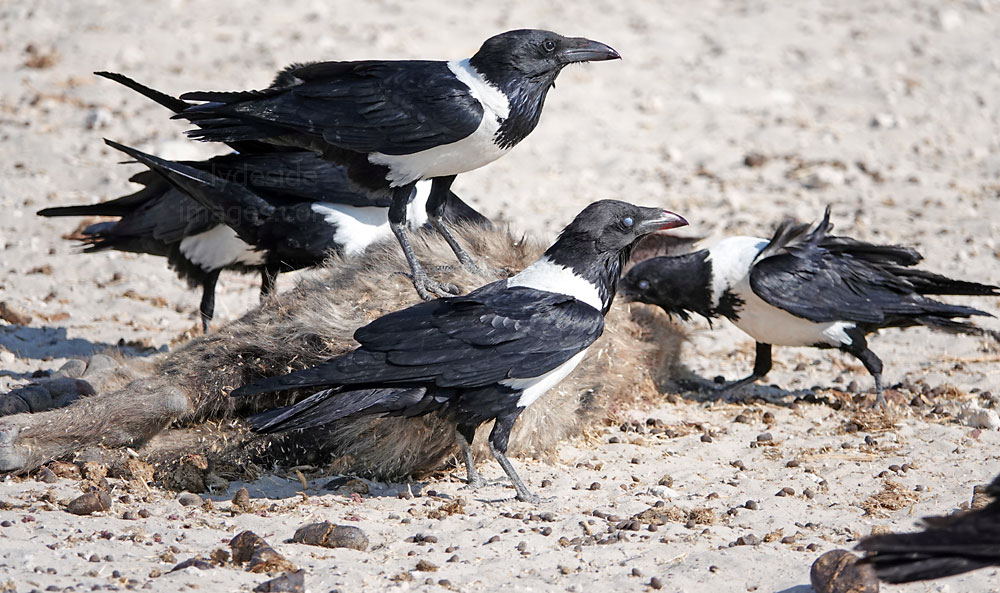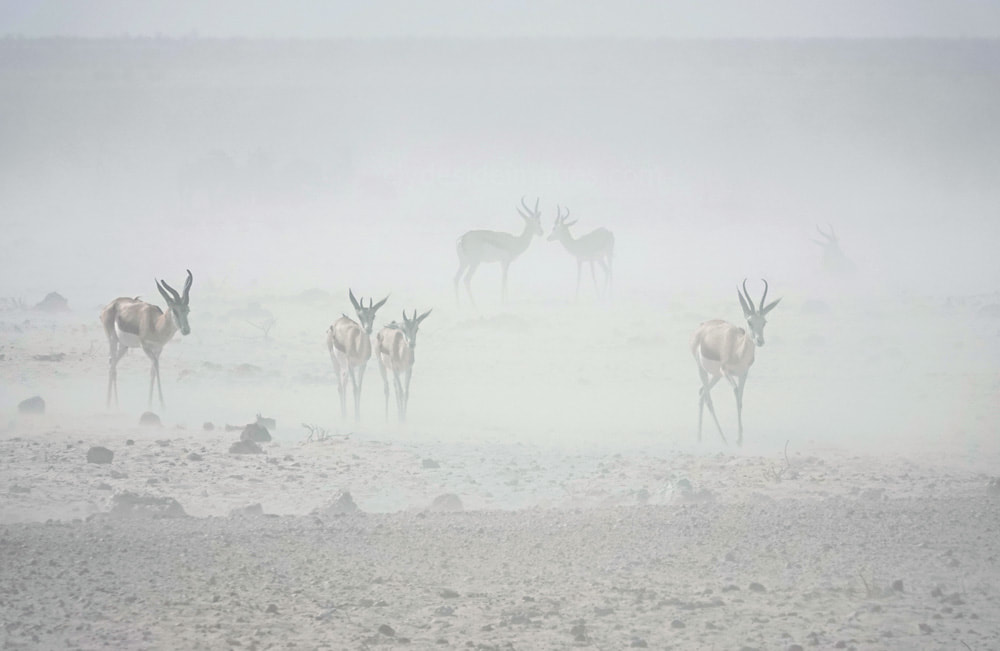Namibia
Etosha Waterholes
Ozonjuitji m'Bari
The name of this waterhole, often abbreviated to M’Bari, is Herero and means ‘two honeybees’, a reference to the first initials of the surnames of Messrs H.A. Böttger and L.W. Berman (two `B`s) who provided funds to erect a windmill here. This site, potentially one of Etosha`s most productive for wildlife viewing, is located on the edge of the Charles Marais Dam which was built to catch water flowing from the farms south of the park. A suspicion arose, however, that this source was increasing the incidence of Anthrax in Etosha and the dam wall was eventually breached as a precaution. During the rainy season, water still accumulates near the site of the dam and flamingos and other water birds congregate here.
I`ve visited Ozonjuitji m'Bari four times in total and on each occasion it lived up to its reputation as one of Etosha`s premier wildlife viewing sites, particularly in 2015 when my wife and I stopped off on the way back from a short stay at Dolomite Rest Camp in the remote western section of the National Park. M’bari is the only waterhole west of Okaukuejo and Okondeka that holds water during the dry season and we saw an outstanding number and variety of animals.
It`s quite a distance from both the Dolomite and Okaukuejo restcamps though - the 57 km journey from the latter taking well over an hour at a steady pace, and that`s without stops. The drive out is usually worthwhile. Just make sure you have sufficient time to get back to your accommodation or exit the Park before the sunset curfew.
|
In September 2015, after checking out at Okaukuejo`s reception, we set off for Dolomite with the rising sun still low in the sky. The first wildlife encounter was a family of Giraffe at the roadside. Most of the waterholes along the first part of the route are totally dry and haven't held water for decades. Grunewald (not illustrated), only a short diversion from the main road, is one such location. Despite the dry conditions, large areas of woodland were almost like open UK parkland in autumn with lots of well-spaced trees and golden brown leaves.
|
The appearance of our 4x4 startled a Honey Badger foraging right beside the track. I missed out on a good close-up as it quickly toddled off but managed this shot for the record. These elusive animals are not usually seen during daylight hours. Back on the main road, a pair of Rhino were spotted grazing in the distance.
|
Unlike some of the other waterholes off the north side of the main Dolomite - Okaukuejo road, Ozonjuitji m'Bari is an excellent location for photography in the morning light. It's a magnet for plains game where literally hundreds of herbivores can be within sight at any one time. This was one of many spots we had to ourselves and sat for over an hour taking in the constantly-changing scene, before reluctantly continuing on our way.
|
Hawks were hunting among huge flocks of Namaqua Sandgrouse and smaller birds coming to the trough, successfully latching onto a target every few attempts and devouring their catch on the ground. In the shot on the left, a raptor can be seen in the top left corner starting its attack dive. A pair of Lanner Falcons were doing particularly well.
|
Even at the height of the dry season, waterbirds can be found albeit in reduced numbers. The heron pictured below was scanning for potential prey from the top of the waterhole pump`s solar panel. The Pied Crows are experts in begging for scraps and although visitors face a hefty fine if caught feeding any animal or bird within the Park, these cheeky corvids seem to have a good deal of success.
One minute, there were only a few animals in view, then large herds and sometimes individual animals would appear and make their way over.
Wildebeest, apparently desperate for water, charged down kicking-up a large cloud of dust in the process while other animals just ambled along.
A few days later, on the return journey from Dolomite to Okaukuejo, intermittent wildlife sightings continued but the scene that greeted us at Ozonjuitji m`Bari was nothing short of amazing! I`d never seen so many animals together in one place - there must have been well over 1,000 spread across the plains with large herds and individuals, coming to or going from the waterhole. Just before I turned off the main road, I saw these four lionesses sheltering from the sun, just out of sight of the vast procession of potential prey. Luckily for this Giraffe, they`d obviously decided to wait until it was a bit cooler before hunting.
|
I spotted Secretary Birds at various locations but they were all fairly distant. This one ended up being my best shot.
The common name for this species is thought to have originated from the crest of long quill-like feathers around the head, which gives the bird a secretary-like appearance with quill pens tucked behind the ears, as was once common practice. An alternative suggestion is that "secretary" is borrowed from a French corruption of the Arabic saqr-et-tair or `hunter-bird`. Although similar to crane when viewed from a distance or in flight, the Secretary Bird is instantly recognisable due to its eagle-like body on crane-like legs which increases the bird’s height to as much as 1.3 m (4.3 ft) tall. |
These birds prefer open grasslands and savannas rather than forests or dense shrubbery and although they spend much of their day on the ground, they return to roosting sites, usually the local Acacia trees, just before dark. Unlike most birds of prey, the Secretary Bird hunts on foot. Adults work in pairs and sometimes as loose familial flocks, stalking through the habitat with long strides to flush or catch their meal. Prey may consist of insects, mammals ranging in size from mice to hares and mongoose, crabs, lizards, snakes, tortoises, small birds, birds` eggs, and sometimes dead animals that have perished as a result of a grass or bush fire. Snakes also feature on their diet including venomous species such as adders and cobras.
These are all Burchell`s Zebra but the rarer Hartmann's Mountain Zebra also visit here although they're more often found using the waterholes closer to Dolomite Camp. Hartmann`s is a subspecies of the mountain zebra found only in far south-western Angola and western Namibia. They prefer to live in small groups of 7-12 individuals. They are agile climbers with the ability to survive in arid conditions and steep mountainous country. The main identifying features are that their stripes are thin, all black and close together. The stripes also go all the way down the animals` legs, unlike those of the common or Burchell`s Zebra.
One of the highlights here was seeing the Zebra stallions battle. The fights were usually vicious but brief.
As well as Zebra stallions, male Springbok and Oryx were all having `head-to-heads`, kicking up plenty of dust in the process. A Red Hartebeest is pictured below. These large, reddish-fawn antelopes have a sloping back, a distinctive long, narrow face and both sexes have heavily ringed horns. Of the 12 subspecies found in Africa, the Red Hartebeest is the only one which occurs in southern Africa. This animals` name comes from the Dutch word `hert` which means deer in Dutch and `beest` meaning beast. The term hartebeest was used by the early Boer settlers who thought the animals resembled a deer.
|
Red Hartebeest are predominantly a grazing species and their preferred habitats are the dry, arid regions of Namibia, the Kalahari Desert, southern Botswana, and north-western South Africa.
Following a gestation period of eight months, single calves are normally give birth before the summer rains. For a brief period after being born, calves are hidden in dense vegetation prior to joining the herd. |
Around mid-day, this big male lion just sauntered up amongst the hundreds of animals at the waterhole and took down an Oryx which had been drinking contentedly at the water`s edge. This was the scene once the other animals had scattered and the dust had cleared - no wonder this Warthog decided to make itself scarce!
Please bear in mind that all my images are subject to copyright. They are not free to use and have been embedded with a digital watermark.
In October 2018, while staying at Etosha Safari Lodge south of the Andersson Gate, my wife and I made another visit to M`bari, entering the Park at 06:45 hrs. Compared with the hustle and bustle we experienced at Nebrownii, this route is a pleasure to drive. I was travelling at a slow pace ready to stop for any sightings in this less-visited section of Etosha and we didn`t see another car for two hours!
A Rhino, far out on the plain on the north side of the road spotted our 4x4 before we were aware of it. The powerful beast attracted our attention only when it kicked-up dust, hurriedly trying to get even further away, Sadly, poaching is a serious problem in Namibia, especially within the National Park. My wife and I saw an example of the result of such a crime on our last visit to Namibia when we came a cross a Rhino calf that had been shot several times and lay fatally wounded near Dolomite Restcamp. No doubt the animal sprinting away here had witnessed some of its companions meet a similar fate.
A Spotted Hyena and Black-backed Jackal beside the Okaukuejo - Dolomite road.
Along at M`Bari, there was a fair bit of activity but there was no signs of lions this time or other predators. Gusts whipped up large dust clouds that blew across the surrounding plains, temporarily screening the animals from view. After a short while a pick-up truck appeared containing Park staff who carried out maintenance on the pump.
Detailed information on Namibia and additional images taken there can be found on Clydeside Images.com. Utilise the blog`s search box or the `Overseas-Namibia` fly-out label on the right-hand side of the blog page. Please bear in mind that my Stock Photography Archive has even more shots taken in Namibia. If you wish to purchase any image(s) please email using the Contact Form and I will respond at the earliest opportunity.
Pied Crows were squabbling over the carcass of a juvenile Hyena close to the parking area.
